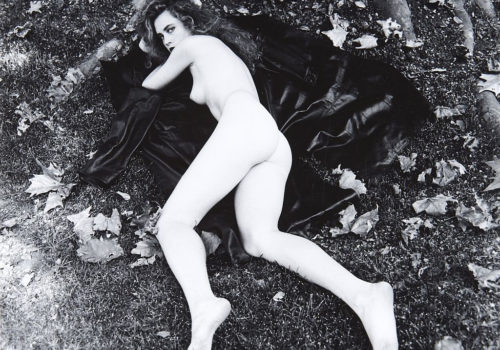On stage at the Museo Pignatelli 140 images by Italian and foreign artists who worked in Naples during the 80s.The exhibit complies with the project of the Villa Pignatelli-Casa della Fotografia to redefine the contribution the city of Naples made to the photographic culture, blending reportage, new narrative moods and artistic researches. The name of the exhibit, is the name of the well-known film by Antonioni, it combines the different photography of the time, illustrates its relationship with the art system and tells about the collecting of arts and photos in Naples.
“This exhibit with the ones at the Castel Sant’ Elmo and Accademia di Belle Arti of Naples, is a project that shows the complexity of the scene of photography in Naples during the 80s, S
At that time, the art historian Cesare De Seta with the support of the Azienda Autonoma di Soggiorno Cura e Turismo di Napoli promoted a series of exhibits calling the most innovative photographers on the international scene to show the city art history, architecture and urbanism. “It was a crucial moment for a new way of seeing. De Seta launched an innovative challenge to some of the most sensitive photographers of the time, creating a public contracting institution which entrusted them with the task of a personal reading of the city. From 1981 to 1985 well known photographers such as Gabriele Basilico, Arnaud Claas, Franco Fontana, Joan Fontcuberta, Lee Friedlander, Luigi Ghirri, Claude Nori, Charles Traub have been in Naples measuring themselves with photographers from the city. In these years associations and new private spaces had a fundamental role, for they managed to hail the emergence of photographic art by artists as Robert Mapplethorpe, Helmut Newton, Cindy Sherman and Thomas Struth. In Naples photography was involved in the culture system.
Denise Maria Pagano , director of Villa Pignatelli- Casa della fotografia and curator of the exhibit adds: “Portraying Naples may trap the authors into stereotypes: these artists managed to go beyond investigating the fascinating, complex and multifaceted reality, that is both documentary and symbolic narration. As in a theatre, the stage of the alleys, the Gulf perspective, convey a sense of apparent immobility and silence, as well as of shameless loudness, with the lacerating wounds of its churches after the earthquake and the illusory joyful images of the waterfront. All of this conspires to reverse the model of a picturesque city in a new figurative dimension. In 1981 De Seta started the project calling seven well-known photographers in order to update the iconographic representation of the city in the exhibition Sette fotografi per una nuova imagine, followed by Città sul mare con porto and Napoli d’inverno. Then there were Fasti barocchi and Cartoline da Napoli (1985)”.
“The exhibit is based on a principle stated in the 80s: a photo if displayed in an exhibit space is no longer a “snapshot” but a photographic work. More than thirty years since , the exhibit tells the story of works produced and exhibited in Naples, a fascinating story because at the time photographers awareness was growing, institutions sensitivity was changing and the city of Naples was hosting some fundamental events for photography. d photography. In the early 80s there was a new awareness that no longer considered reportage as the only way to interpret reality. The quake of 1980 was documented by photojournalists, of course, but some authors’ images took the forms of allusion to the tragedy, it echoed in the work Andy Warhol, at the invitation of Lucio Amelio, made for Terrae Motus. Warhol, who did not hesitate to show the victims of his Car crash series,for the Irpinia earthquake chose to reproduce the headline of the Naples daily Il Mattino – the famous Fate Presto (Hurry up): not an image but a cry, not the theater of the disaster but the invocation. Mimmo Jodice was among the first photographers to consciously empty the urban space, with a vision enriched by metaphysical and surrealistic culture. In the empty urban theater of Naples a photographic “non-place” juxtaposes, artists like Helmut Newton, Cindy Sherman or Thomas Ruff investigating the representation of the body”, Giuliano Sergio says
Costellazione ‘80
For an overview of the cultural and artistic context, along with Blow Up. Fotografia a Napoli 1980-1990 at the Museo Pignatelli and Rewind. Arte a Napoli 1980-1990 at Castel Sant’ Elmo, the Museo di Capodimonte and the collection Terrae Motus of the Reggia di Caserta are involved, as elements of Constellation ’80 (a virtual path connecting museum sections collections and exhibitions). Contribution also of the Museo Madre and Accademia di Belle Arti of Napoli. Maria Grazia Bellisario director of the Servizio Architettura e Arte Contemporanee della Direzione Generale per il Paesaggio, le Belle Arti, l’Architettura e l’Arte Contemporanee, stresses that this virtual archive proves the artistic production of the 80s allowed debates, experiments but above all provided an impetus in forming a photographic culture.
Artists on stage
Cesare Accetta, Gabriele Basilico, Gianni Berengo Gardin, Antonio Biasiucci, Roberto Bossaglia, Vincenzo Castella, Giovanni Chiaramonte, Arnaud Claas, Clegg & Guttmann, Mario Cresci, Luciano D’Alessandro, Paul den Hollander, Fabio Donato, Luciano Ferrara, Franco Fontana, Joan Fontcuberta, Günther Forg, Lee Friedlander , Giuseppe Gaeta, Caio Garrubba, Luigi Ghirri, Guido Guidi, Andreas Gursky, Mimmo Jodice, Gianni Leone, Robert Mapplethorpe, Raffaela Mariniello , Lello Mazzacane, Antonia Mulas, Helmut Newton, Claude Nori, Sergio Riccio , Melita Rotondo, Thomas Ruff, Marialba Russo, Roberto Salbitani, Jan Saudek, Cindy Sherman, Thomas Struth, Eckhard Supp, Charles Traub, Fulvio Ventura, John Vink, Verena von Gagern, Manfred Willmann
EXHIBITION
BLOW UP – Fotografia A Napoli 1980-1990
December 20, 2014 – February 8, 2015
Villa Pignatelli – Casa della fotografia
Riviera di Chiaia, 200
80121 Napoli
Italy
Wednesday to Monday: 10.00am – 2.00pm
www.polomusealenapoli.beniculturali.it
















